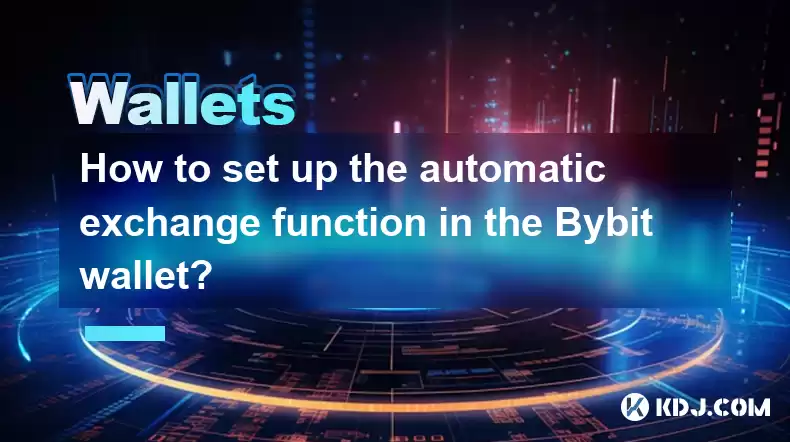-
 Bitcoin
Bitcoin $119000
-2.21% -
 Ethereum
Ethereum $4315
1.01% -
 XRP
XRP $3.151
-3.11% -
 Tether USDt
Tether USDt $0.0000
0.00% -
 BNB
BNB $808.5
-0.71% -
 Solana
Solana $175.8
-4.21% -
 USDC
USDC $0.9999
0.00% -
 Dogecoin
Dogecoin $0.2250
-3.92% -
 TRON
TRON $0.3469
1.77% -
 Cardano
Cardano $0.7818
-3.81% -
 Chainlink
Chainlink $21.47
-2.10% -
 Hyperliquid
Hyperliquid $43.30
-6.81% -
 Stellar
Stellar $0.4370
-2.84% -
 Sui
Sui $3.682
-4.40% -
 Bitcoin Cash
Bitcoin Cash $590.8
2.67% -
 Hedera
Hedera $0.2484
-5.20% -
 Ethena USDe
Ethena USDe $1.001
0.00% -
 Avalanche
Avalanche $23.10
-4.29% -
 Litecoin
Litecoin $119.2
-3.96% -
 Toncoin
Toncoin $3.409
0.90% -
 UNUS SED LEO
UNUS SED LEO $9.016
-1.29% -
 Shiba Inu
Shiba Inu $0.00001304
-3.82% -
 Uniswap
Uniswap $11.18
1.33% -
 Polkadot
Polkadot $3.913
-3.51% -
 Cronos
Cronos $0.1672
-3.08% -
 Dai
Dai $1.000
0.02% -
 Ethena
Ethena $0.7899
-4.70% -
 Bitget Token
Bitget Token $4.400
-1.23% -
 Pepe
Pepe $0.00001132
-5.93% -
 Monero
Monero $257.9
-6.44%
How to set up the automatic exchange function in the Bybit wallet?
Bybit doesn't have an automatic exchange function, but you can use its API or advanced order types for partial automation, though it carries significant risk.
Mar 29, 2025 at 01:00 am

Bybit, a popular cryptocurrency exchange, doesn't offer a built-in "automatic exchange" function in the traditional sense of automatically converting one cryptocurrency to another based on pre-set parameters or market conditions. There's no single button to automate trades based on price fluctuations. However, you can achieve a similar effect using their API and third-party tools or by employing specific strategies within the Bybit platform itself. This article will explore these options.
Understanding Bybit's Functionality and Limitations
Bybit primarily focuses on spot and derivatives trading. While it provides robust tools for manual trading, automated trading strategies require more advanced techniques. It's crucial to understand that any automated trading carries significant risk. Market volatility can quickly lead to losses if your automated strategy isn't carefully designed and monitored. Bybit doesn't directly support setting up fully automated exchange functions within its user interface.
Using Bybit's API for Automated Trading
Bybit offers a comprehensive API (Application Programming Interface) that allows developers to build custom trading bots and applications. This is the closest you can get to an "automatic exchange" function. Using the API, you can programmatically execute trades based on various conditions, such as price triggers, technical indicators, or other custom logic.
- Step 1: API Key Generation: Access your Bybit account and generate API keys with the necessary permissions. Be extremely cautious with your API keys; treat them like your passwords. Any compromise could result in unauthorized access to your funds.
- Step 2: Choosing a Trading Bot Platform: Several platforms exist that allow you to connect to Bybit's API and build your automated trading strategies. Popular options include Python libraries like
ccxtor dedicated bot platforms offering visual interfaces. - Step 3: Strategy Development: This is the most critical step. You'll need to define your trading strategy – the rules that dictate when and how trades are executed. This could involve simple price thresholds or complex algorithms based on technical analysis indicators.
- Step 4: Backtesting: Before deploying your bot to live trading, thoroughly backtest it using historical data. This helps to identify potential flaws and optimize your strategy to minimize risks.
- Step 5: Deployment and Monitoring: Once backtesting is complete, deploy your bot to a live trading environment and closely monitor its performance. Regularly review its activity and make adjustments as needed.
Utilizing Bybit's Order Types for Partial Automation
While not fully automated, Bybit's advanced order types can partially automate aspects of your trading. These tools allow you to set specific conditions for order execution, although you still need to manually initiate the orders.
- Stop-Limit Orders: These orders are triggered when the market price reaches a specific level (stop price) and then execute at a predetermined price (limit price). This helps to limit potential losses or lock in profits.
- Take-Profit Orders: These orders automatically sell your asset when it reaches a predetermined profit target. This helps secure profits and avoid potential reversals.
- Trailing Stop Orders: These orders automatically adjust the stop price as the market moves in your favor, protecting profits while allowing for greater price appreciation.
Understanding the Risks Involved
It is crucial to understand that automated trading is inherently risky. Market conditions can change rapidly, and even the most sophisticated algorithms can fail. Always start with small amounts of capital when testing automated strategies. Never invest more than you can afford to lose. Thorough research, careful planning, and diligent monitoring are essential for successful automated trading.
Frequently Asked Questions
Q: Can I automate cryptocurrency exchanges on Bybit without using the API?
A: No, Bybit doesn't offer a built-in automated exchange function within its user interface. The API is the only way to achieve true automation.
Q: What programming languages are suitable for building Bybit trading bots?
A: Python is a popular choice due to its extensive libraries and community support for cryptocurrency trading. Other languages like JavaScript or C# can also be used.
Q: Are there any pre-built trading bots specifically for Bybit?
A: While some third-party platforms offer integrations with Bybit's API, it's crucial to carefully research and vet any bot before using it. Always prioritize security and understand the bot's functionality thoroughly.
Q: What are the security considerations when using Bybit's API?
A: Never share your API keys with anyone. Use strong, unique passwords, and enable two-factor authentication (2FA) for your Bybit account. Regularly review your API key permissions and revoke access if necessary.
Q: What are the risks associated with automated trading on Bybit?
A: Automated trading involves significant risks, including unexpected market movements, algorithm failures, and potential security breaches. Losses can occur rapidly, and it's crucial to manage risk effectively. Never invest more than you can afford to lose.
Q: How can I learn more about using Bybit's API?
A: Bybit provides comprehensive API documentation on their website. You can also find numerous tutorials and resources online covering API usage and bot development. However, understanding the concepts of API interaction and programming is necessary.
Disclaimer:info@kdj.com
The information provided is not trading advice. kdj.com does not assume any responsibility for any investments made based on the information provided in this article. Cryptocurrencies are highly volatile and it is highly recommended that you invest with caution after thorough research!
If you believe that the content used on this website infringes your copyright, please contact us immediately (info@kdj.com) and we will delete it promptly.
- PumpFun (PUMP) Price: Riding the Meme Coin Wave or Facing a Wipeout?
- 2025-08-12 16:50:12
- Uniswap's Legal Clarity Fuels Price Target: Will UNI Hit $12.85?
- 2025-08-12 17:30:13
- Arctic Pablo Coin: Meme Coin Growth Redefined?
- 2025-08-12 16:50:12
- Pumpfun, Snorter Token, and Meme Coin Mania: What's the Hype?
- 2025-08-12 17:30:13
- Crypto, Long-Term, Small Investment: Finding Gems in the Digital Rough
- 2025-08-12 17:35:12
- Do Kwon's Terra Collapse: Guilty Plea Looms – A Stablecoin Fraud Saga
- 2025-08-12 17:40:12
Related knowledge

How to manage your portfolio in Exodus wallet
Aug 08,2025 at 10:07pm
Understanding the Exodus Wallet InterfaceThe Exodus wallet is a non-custodial cryptocurrency wallet that supports a wide range of digital assets. When...

How to reset your MetaMask password
Aug 08,2025 at 01:28pm
Understanding the MetaMask Password Reset ProcessMany users confuse the MetaMask password with the seed phrase or private key, but they serve differen...

How to buy Dogecoin on MetaMask
Aug 08,2025 at 03:42am
Understanding Dogecoin and MetaMask CompatibilityDogecoin (DOGE) is a popular meme-based cryptocurrency that operates on its own blockchain, originall...

How to switch between networks in Trust Wallet
Aug 09,2025 at 11:07am
Understanding Network Switching in Trust WalletSwitching between networks in Trust Wallet allows users to manage assets across different blockchains, ...

How to set up Face ID for MetaMask
Aug 12,2025 at 02:42am
Understanding Face ID and Its Role in MetaMask SecurityMetaMask is a widely used cryptocurrency wallet that allows users to interact with the Ethereum...

How to set up Face ID for MetaMask
Aug 11,2025 at 09:28am
Understanding Face ID and Its Role in MetaMask SecurityFace ID is a biometric authentication system developed by Apple that uses facial recognition to...

How to manage your portfolio in Exodus wallet
Aug 08,2025 at 10:07pm
Understanding the Exodus Wallet InterfaceThe Exodus wallet is a non-custodial cryptocurrency wallet that supports a wide range of digital assets. When...

How to reset your MetaMask password
Aug 08,2025 at 01:28pm
Understanding the MetaMask Password Reset ProcessMany users confuse the MetaMask password with the seed phrase or private key, but they serve differen...

How to buy Dogecoin on MetaMask
Aug 08,2025 at 03:42am
Understanding Dogecoin and MetaMask CompatibilityDogecoin (DOGE) is a popular meme-based cryptocurrency that operates on its own blockchain, originall...

How to switch between networks in Trust Wallet
Aug 09,2025 at 11:07am
Understanding Network Switching in Trust WalletSwitching between networks in Trust Wallet allows users to manage assets across different blockchains, ...

How to set up Face ID for MetaMask
Aug 12,2025 at 02:42am
Understanding Face ID and Its Role in MetaMask SecurityMetaMask is a widely used cryptocurrency wallet that allows users to interact with the Ethereum...

How to set up Face ID for MetaMask
Aug 11,2025 at 09:28am
Understanding Face ID and Its Role in MetaMask SecurityFace ID is a biometric authentication system developed by Apple that uses facial recognition to...
See all articles

























































































